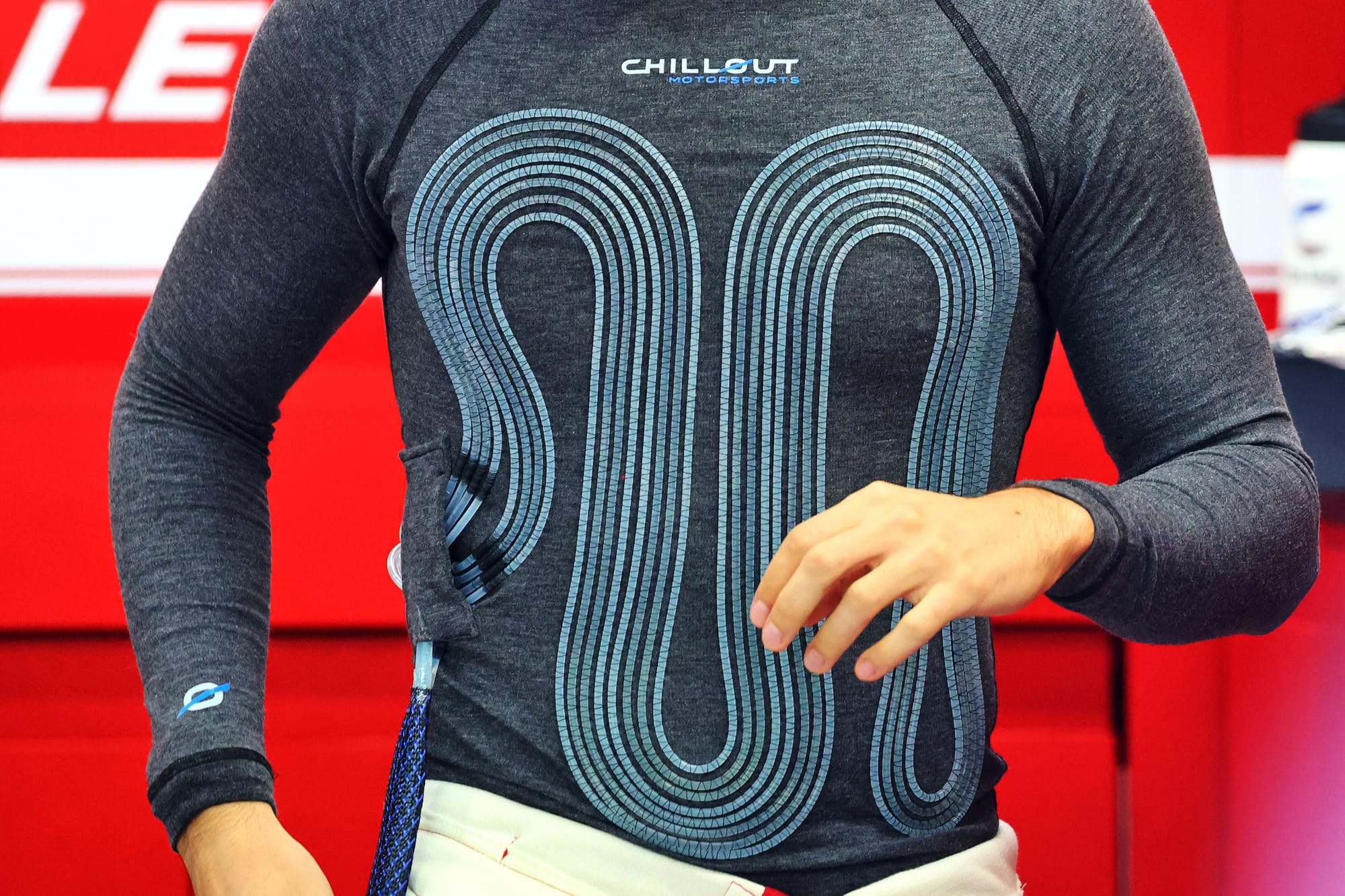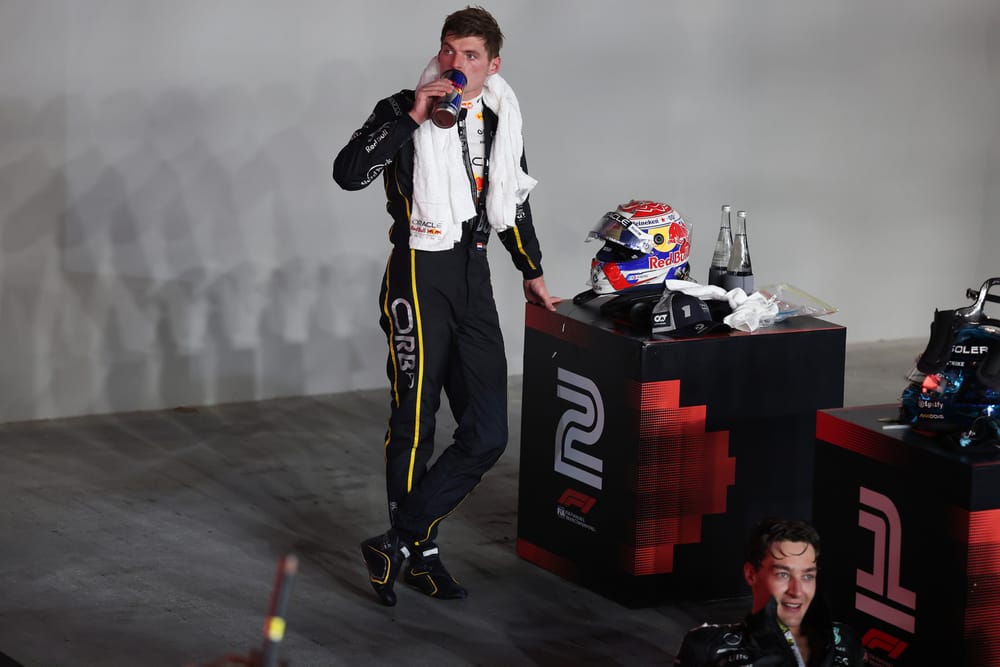Formula 1's first Heat Hazard race in Singapore triggered fresh debate last weekend between drivers and the FIA about the future of the cooling vest idea.
Some raved about the benefits, wore their vests in the race and had zero complaints. Others are either not convinced it is necessary or aren't happy with how it works right now.
One of the most outspoken against it being made mandatory is Max Verstappen, who rejected an argument put forward by the FIA that the only reason not everyone likes it is that teams have been slow in getting the technology to work.
"They can say it's a bad design," said the Red Bull driver. "I disagree. It just needs to be an option for the drivers to choose. Some like it, some don't, and that's fine. It should be a personal preference."
While talks between drivers and the FIA will take place about tweaking rules for 2026 so its use perhaps remains optional for one more year, one thing is crystal clear: F1 is not going to abandon the concept.
Rather than concluding that the challenges of getting the current cooling systems to work properly are too much to worth the bother if drivers do not want it anyway, the FIA feels there is a bigger picture at play here.
Yes, the technology is not perfect right now, and it may seem an unnecessary addition to some.
But, if the use of cooling vests avoids a worst-case scenario of an F1 race being cancelled in the future because it is too hot, then all the efforts will have been worth it.
Technology limitations
The FIA accepts that the current systems are not perfect, but suggests "tardiness" from some teams in not implementing their devices has been a factor in this.
There is also a case of the current available technology not quite being advanced enough to deliver a solution that is the perfect fit for F1 right now.
High-tech answers involving heat exchangers and refrigerators have not proved suitable yet, so right now the basic concept is of liquid getting pumped around the drivers' vests that has been cooled by flowing around blocks of ice.
It works well until the ice melts.
But there is a reason why the FIA fast tracked the cooling systems into action before the technology is perfect.
As the FIA's single seater director Nikolas Tombazis points out, it was the drivers that put direct pressure on the FIA to find a solution after the troubled 2023 Qatar Grand Prix.
"The drivers themselves were very critical and demanded some action," he told The Race.
"There were some scientific papers at that time, from medical journals and things like that, which indicated that having a high core temperature for prolonged periods can cause lasting issues – not just dehydration.
"Because there was such an overriding scream to fix the topic, we didn't hesitate once about it. We went straight on trying to fix it.
"The topic took longer than we wanted, because the initial engineering solution that was being sought involved a heat exchanger and various pumps, and maybe a small refrigerant pump. It was quite complex.
"But then there were some experiments in mid to late 2024 which went down the current philosophy route – which is what we call a total loss system as it cannot carry on ad infinitum.
"So you have this ice that gradually melts away. There were some successful experiments with that and it was decided that was the best system, the best way to do it."
There remains a fair degree of variability still between teams in how long their cooling system works for – with some lasting just 15 minutes and others being able to get it running for nearly a full race distance. This probably explains why drivers are so varied in their opinions.
While the current system certainly has its limitations in not being able to run for a full race distance, the FIA has no doubts that, if teams wake up to getting them working properly, things will get better.
That is why the cooling systems falls under the remit of being what is known as an Open Source Component (OSC) – so all teams have access to everyone's designs and can in theory copy the best.
Tombazis added: "We felt that this shouldn't be an area where you try to be smarter or whatever. That's why there's a weight delta for it, etc, so you don't try to design it half a kilo lighter or anything like that."Plus, with the FIA firm that the vests are here to stay, that in itself will prove the motivation for the technology to get improved.
As Tombazis said: "Some garment manufacturers have since made more progress and tried to resolve some of the issues, and some teams have been a bit more proactive to resolve things.
"I don't think people should get too slack to say, 'well, you know, it's not going to be mandatory, who cares, I'm not going to ever wear it'.
"I think it is easy in a place like Singapore, where the temperature is not terrible to say, 'well, you know, actually, I'm OK'.
"But in Qatar two years ago, it was pretty bad, and I don't think there's any guarantee that we're not going to have other events like Qatar or maybe even worse.
"And with the extreme climates we have, the last thing anyone would want to do is have to cancel a race because it's too hot."
Safety? Comfort? Or both?

The FIA says that the arguments at play here are not about driver comfort, or whether they are fit enough to even need a cooling vest.
It sees this as a safety matter, which fits in with its remit of pushing forward in seeking incremental improvements wherever it can - because each of these helps create the foundations of the safe sport we have right now.
Tombazis explained that while there was some kickback from drivers that cooling vests should not be put in the same safety bracket as HANS and the Halo, he sees things differently.
"In the drivers' meeting, I mentioned these other things, and I got quite a response of 'well surely you realise the Halo is different to the cooling vest,'" he explained.
"Clearly nobody would say that the cooling vest is the same level of safety as the helmet or the Halo or even the HANS. But I think people should also realise that the reason this is a relatively safe sport of cars doing 350km/h is because there's an accumulation of things over time."
The argument about this being a safety matter was robustly backed by Esteban Ocon – someone who struggled to get comfortable with the cooling system earlier in the year but is now a big fan.
"Every new thing that the FIA has introduced, some drivers were not in favour in the beginning and they ended up being in favour at the end," said the Haas driver.
"Of course it's not the same thing with safety [as HANS and the Halo], but if you have a driver that's been sick all night, vomiting all night, and he's dehydrated, he's not going to go and tell the FIA that. He's going to race.
"And if he races under conditions which are extremely humid, and it [the cooling vest] can help him not to faint and crash into other guys, then I think it is a safety element."
Tombazis feels that sometimes the behind-the-scenes efforts the FIA makes on safety get overlooked.
"We can get criticised for rules, or for getting it wrong in particular racing incidents because we are human and we're not perfect, and we always need to improve," he said.
"But on the specific topic of safety, I think it's the one thing, and I'm not saying this because of me, because I certainly don't deserve any of that credit, but I think the FIA should be getting continuous applause because of the safety record they have.
"This is just one small stone on a big wall. And I don't want to overstate it, but I think it is something that one day in the next few years will stop a race being cancelled and will enable people to drive it properly."
Furthermore, Tombazis does not see this as a binary debate in which driver comfort is ignored because safety trumps everything.
"Our strong belief is that we can have both," he said. "It's not either you're comfortable or you're cool.
"I think it must surely be possible to get to a point where you're both comfortable and cool. That's the target."



